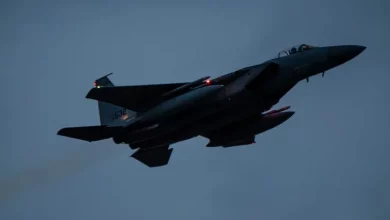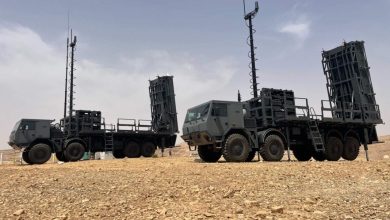
NATO’s space policy is an essential first step in situating the alliance at the forefront of modern security and defense norm-setting and decisionmaking regarding the sustainable, secure, and stable use of outer space.
Space capabilities are a vital aspect of modern security and defense architecture, but their deployment presents increasing challenges. The use of satellites for intelligence gathering, reconnaissance, navigation, and communication has turned outer space into one of the most congested, contested, and consequential domains for military operations while simultaneously raising the likelihood of escalating tensions between space-faring nations.
In response to the rapid technological advancement and the proliferation of actors and interests in space, in 2019 the North Atlantic Treaty Organization (NATO) promulgated space—along with air, land, maritime, and cyberspace—as its fifth domain of operations and warfare. The coverage of NATO’s relatively new space policy has been scarce, yet it offers an intriguing approach to the alliance’s evolving thinking on extraterrestrial security and collective defense while soberly assessing the alliance’s informational and technical gaps.
Many of NATO’s systems, such as the Ballistic Missile Defence program, the Airborne Warning and Control Systems, and the Ground Surveillance System, depend heavily on space-based assets which provide essential positioning and navigation information to allied states and enable precision strikes, combat, search and rescue mission support, missile launch attribution, environmental monitoring, surveillance, reconnaissance, and battlefield targeting data.
The alliance recognized that it must anticipate and identify threats, share intelligence, and coordinate policies and activities in the face of the growing militarization of outer space to minimize its vulnerabilities, maintain a competitive edge, and ensure optimal exploitation of its space assets vis-à-vis China and Russia.
For this purpose, NATO’s defense ministers approved the creation of the Allied Air Command in Ramstein, Germany, in 2020 and NATO’s Space Centre of Excellence in Toulouse, France, in 2021. The multinational teams from Germany, the Netherlands, Spain, the United Kingdom, and the United States currently manning the effort are to work with the allies’ national space agencies and organizations and the NATO Command Structure to detect missile launches; provide operational support; and ensure effective command, control, and decisionmaking capabilities.
The continued weaponization of space is beginning to generate considerable geopolitical tensions. Kinetic counter-space weapons, non-kinetic lasers, microwave weapons, electronic jamming or spoofing of signals or data transmission systems, and deployment of direct-ascent anti-satellite (ASAT) weapons can significantly disrupt NATO operations and adversely affect civilian and commercial space architecture essential to the uninterrupted continuation of economic activity on Earth.
In its June 2021 Brussels Summit Communiqué, the heads of state and government of the thirty NATO allies recognized that the impact of such attacks “could threaten national and Euro-Atlantic prosperity, security, and stability, and could be as harmful to modern societies as a conventional attack.” Yet they also emphasized that the decision to invoke Article V of NATO’s founding treaty would be taken on a case-by-case basis.
Whilst the communiqué itself is by design thin on conveying details about the legal regime which ought to apply to outer space attacks, it is nonetheless warranted to further inquire about the legal controversies which might arise from intentional and non-intentional acts of sabotage of discrete space assets. In case of an attack on a NATO member state’s vital satellite infrastructure, what ought to constitute a proportional response? Is it appropriate to extend the law of armed conflict to outer space conflicts? And finally, what are the international legal limits on the means and methods of waging war in space? To do due diligence on these and similar questions would require a considerable rethinking and expansion of the remit of existing institutional mechanisms for the adjudication of legal disputes between state and non-state actors and imposition of treaty commitments on states actively engaged in the space arms race.
The alliance is mindful of the intensifying “scramble for space” among state and private actors and the potential for instability when military and civilian objectives intermingle or conflict. One of NATO’s key objectives is to enhance its space situational awareness and strategic communication capabilities. This includes monitoring the space environment and detecting, tracking, and identifying human-made objects in space.
The alliance is working to improve its space surveillance capabilities by developing new technologies and resilient infrastructures that can enhance its ability to better monitor objects and events in space and enhance its orientation, response, and deterrence activities. To prevent a space arms race, the alliance must also assuage the fears of non-aligned members, whose perception of NATO’s investment in five core areas of its outer space strategy—namely (i) deterrence, defense, resilience; (ii) capability development and interoperability; (iii) training and exercises; (iv) science, technology, and innovation; and (v) industry partnerships—might be construed as having a dual-use application with offensive capabilities.
The proliferation of state and private actors and interests in space increases the risk of conflict in a rapidly evolving strategic frontier where jurisdictional claims and rights of ownership are explicitly prohibited by the 1967 Outer Space Treaty. The global community is threatened by inevitable regulatory fragmentation as distinct regimes attempt to define normative guardrails and vie for legal supremacy.
NATO’s space policy is an essential first step in situating the alliance at the forefront of modern security and defense norm-setting and decisionmaking regarding the sustainable, secure, and stable use of outer space while mitigating the risks of conflict. By anticipating and mitigating critical security risks and working closely with its member states and international partners, the alliance can facilitate international consensus on a joint approach to the inevitable militarization of space and contribute to the creation of space standards that would benefit the security interests of all space-faring nations.





